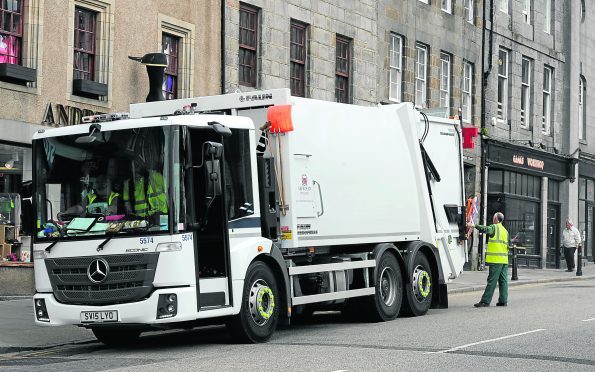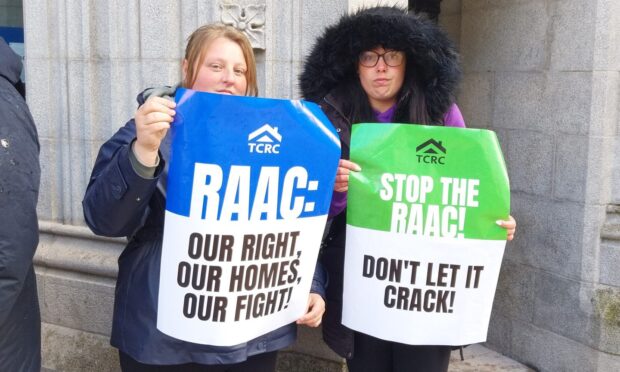Councils across the north-east are paying out around £100,000 a year in compensation for damage caused by bin lorries.
Hundreds of claims have been lodged with Aberdeen City and Aberdeenshire councils over the last five years following incidents with bin lorries, vans and street sweepers.
These have included smashes with cars on the opposite site of the road, crashes caused by icy conditions and damaged fences from reversing vehicles.
In total, Aberdeen City and Aberdeenshire councils have paid out more than £522,000 in damages during that time.
Last night, it was claimed the authorities needed to “get a grip” on the situation and start treating taxpayers’ money – and property – with more respect.
But both councils insisted they took the matter seriously, offering regular training and investigating fully.
According to figures, obtained through freedom of information legislation, Aberdeen City Council’s most costly year was 2013/14 when it paid out £83,262.30 in response to 36 claims.
The following year, Aberdeenshire spent a similar total of £81,618.84, with almost half of that going to motorists whose cars were damaged by waste collection vehicles as they emerged from junctions or parking spaces.
John O’Connell, chief executive of the TaxPayers’ Alliance pressure group, said last night: “It’s ludicrous to see that Aberdeen has such a problem with damaging residents’ property, no doubt made worse by the knowledge that it is taxpayers who will be hurt by this, not individuals’ insurance premiums.
“These councils urgently need to get a grip on this situation and start treating both our money, and our property, with more care and respect.”
Green councillor Martin Ford, who represents East Garioch in Aberdeenshire, said: “Whilst it is inconceivable that the council can operate the waste and recycling system with no incidents or accidents at all, the annual average cost [to Aberdeenshire Council] from such incidents of approximately £48,000 is somewhat higher than I would have expected.”
The largest pay-outs were made in 2014-15, when close to £150,000 in compensation was offered between the two councils.
Since then this number has more than halved – during the period where bin collections have been reduced – with last year’s figure standing at £72,561.82.
Both local authorities have assured that mistakes on the roads are learned from.
An Aberdeen City Council spokeswoman said: “We make efforts to ensure every incident is investigated and recorded, and drivers are given training as appropriate.
“We have carried out full route risk assessment of about 2,200 streets within Aberdeen trying to eliminate any need for reversing, and this data has been used in a new database which allows a new in-cab system to prompts the driver on known hazards to these streets. “
An Aberdeenshire Council spokesman added: “Aberdeenshire is a large geographical area with both rural and urban settings which means that our drivers must negotiate a huge variety of roads, each with their own challenges, in a large, loaded vehicle in all weather conditions nearly every day of the year.
“Despite these challenges, incidents are rare and measures are in place to ensure that remains the case.
“When an incident is reported, it then becomes subject to an accident investigation which helps us to identify the cause of the incident and prevent it happening again.
“In addition, we continually review our route risk assessments, these assessments are aimed at mitigating the potential for incidents on our roads and have helped us to judge vehicles are best suited to be used on each road.”










